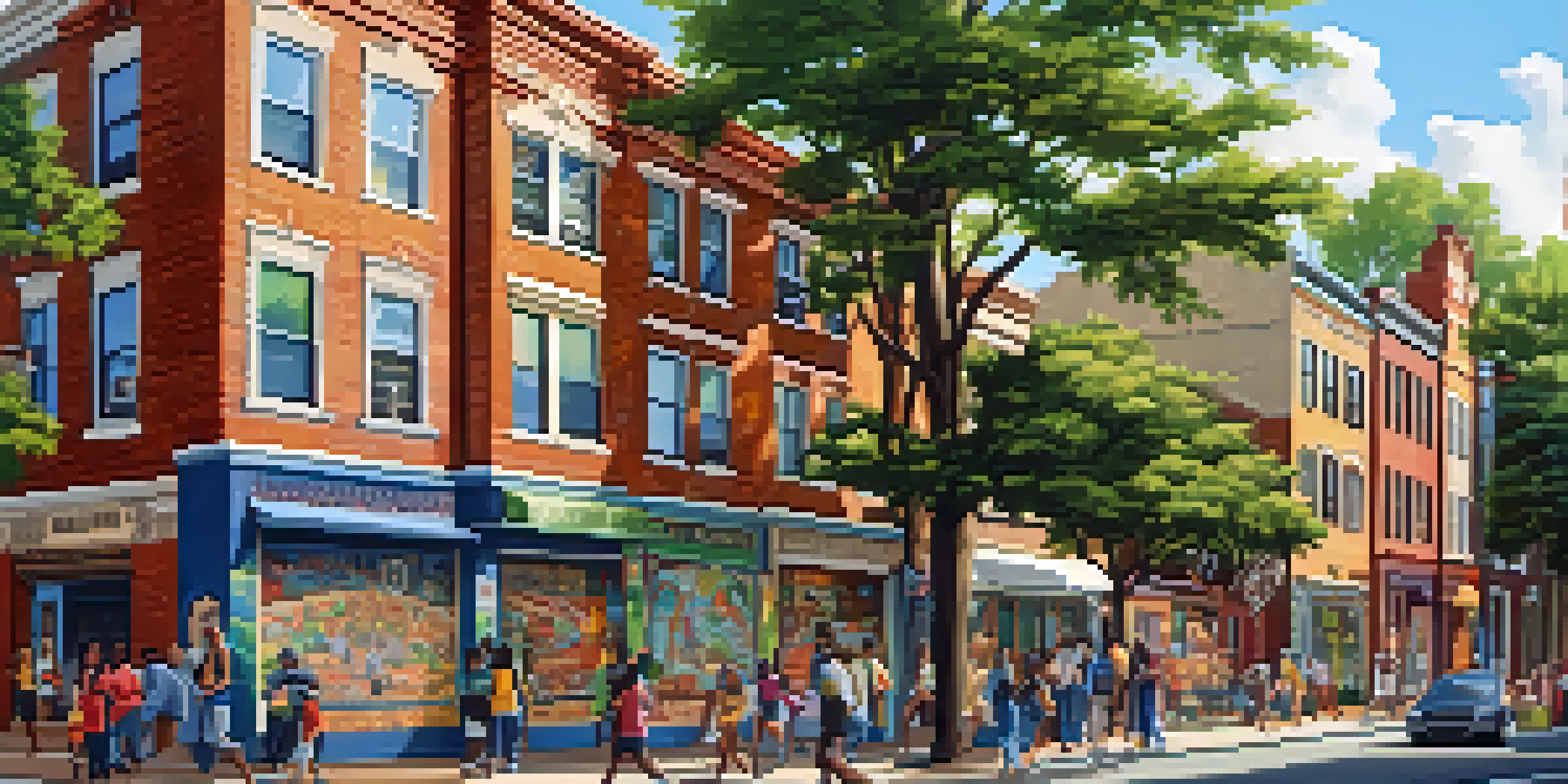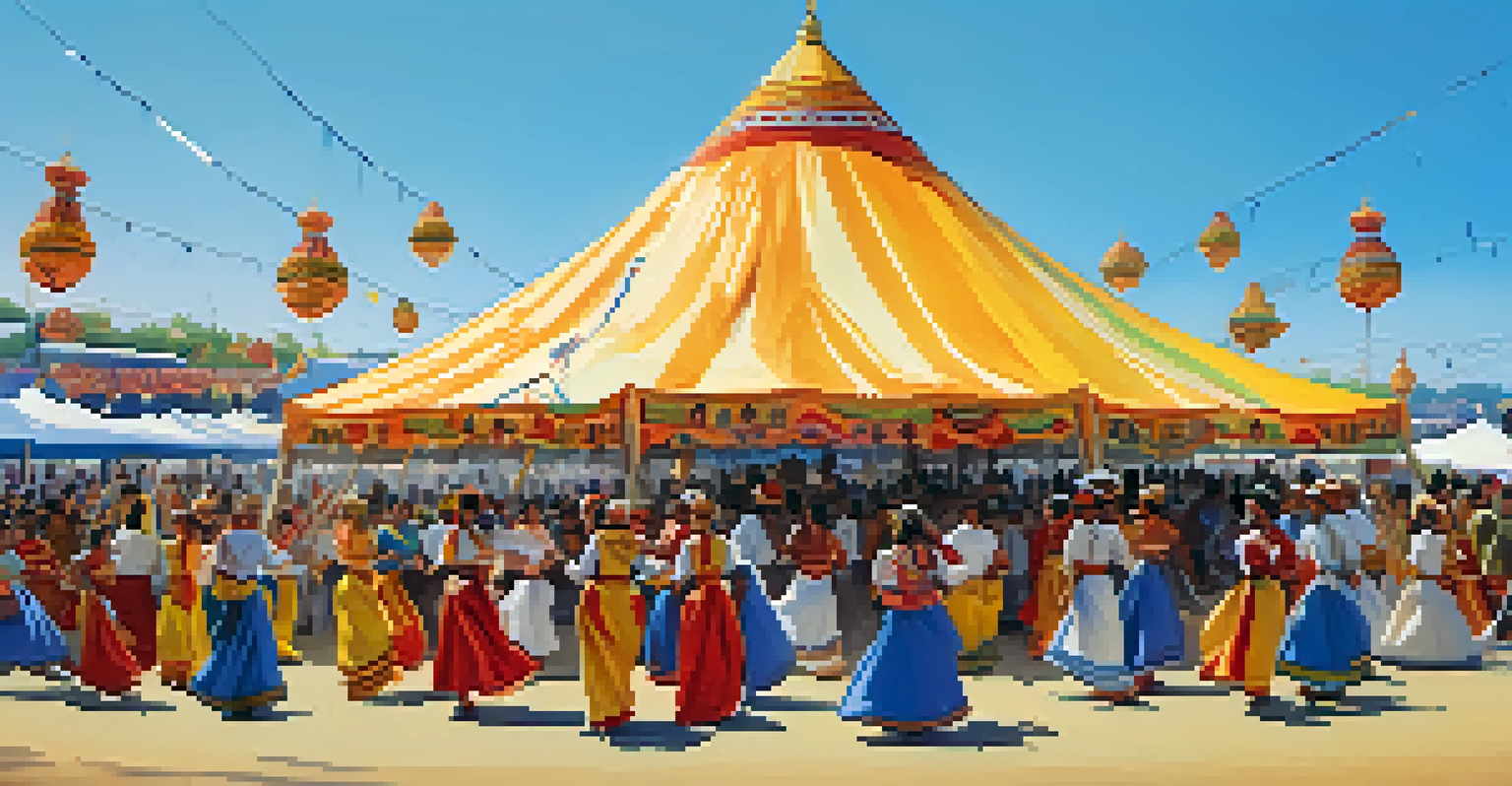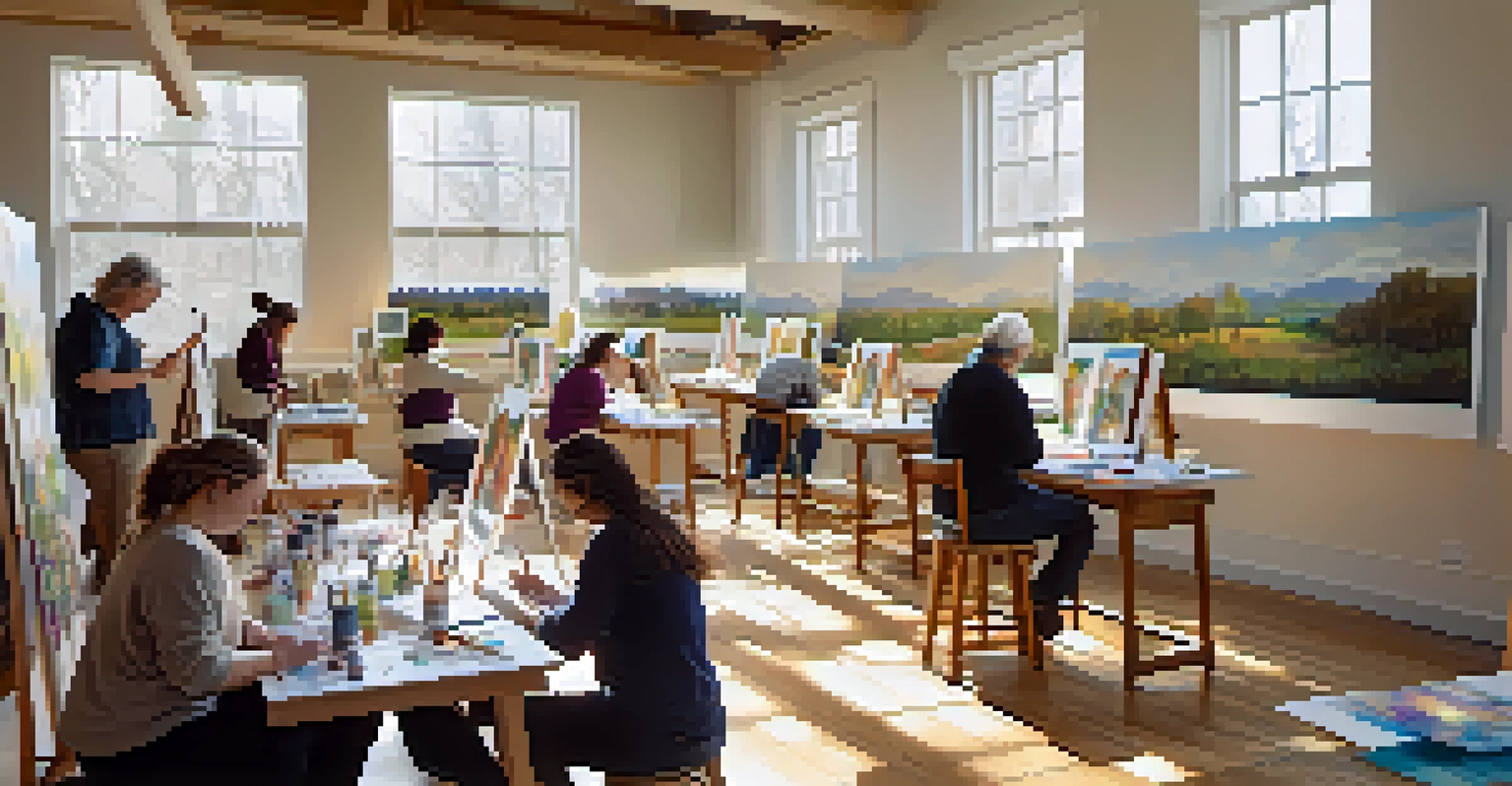Art and Community: Building Cultural Identity Through Creativity

The Role of Art in Shaping Community Identity
Art serves as a mirror reflecting the values, struggles, and aspirations of a community. When people engage with art, whether through creating or experiencing it, they connect with shared narratives that define their identities. This process helps individuals to see themselves as part of a larger story, promoting a sense of belonging.
Art is not freedom from discipline, but disciplined freedom.
For example, consider a mural in a neighborhood depicting its history. Residents often feel a sense of pride and ownership over this artwork, as it encapsulates their experiences and heritage. Such artistic expressions not only beautify spaces but also reinforce communal ties, reminding everyone of their unique contributions to the larger picture.
Related Resource
Moreover, art can act as a catalyst for dialogue and understanding among diverse groups. When communities come together to create or appreciate art, they engage in meaningful conversations that can bridge cultural divides, fostering empathy and a deeper appreciation of one another's backgrounds.
Art as a Tool for Social Change
Throughout history, art has been used as a powerful tool for social change. Artists often use their platforms to highlight issues such as inequality, injustice, and environmental concerns, prompting communities to reflect and take action. This transformational potential of art can ignite movements that reshape societal values.

Take, for instance, the role of street art during protests. Murals and graffiti not only beautify urban spaces but also convey messages of resistance and hope. They can encapsulate the feelings of a community, galvanizing support and drawing attention to critical issues that need addressing.
Art Shapes Community Identity
Art reflects and reinforces the values and narratives that bind a community together, fostering a sense of belonging.
In this way, art becomes a voice for the voiceless, offering a space for marginalized communities to express their struggles and aspirations. By amplifying these stories, art fosters solidarity and encourages collective action, making it a vital instrument in the quest for social justice.
Cultural Festivals: Celebrating Diversity Through Art
Cultural festivals are vibrant celebrations that showcase the artistic expressions of diverse communities. These events bring together various art forms—music, dance, visual arts—creating a rich tapestry of cultural experiences. By celebrating these differences, communities can foster appreciation and understanding among their members.
The greatest respect an artist can pay to music is to give it life.
For example, a local cultural festival might feature traditional dance performances alongside contemporary art showcases. This blend of old and new not only honors heritage but also encourages innovation within artistic practices. Such gatherings allow individuals to engage with their culture in dynamic ways, strengthening their cultural identity.
Related Resource
Additionally, festivals promote community cohesion by inviting participation from all age groups and backgrounds. They create shared memories and experiences, reinforcing bonds among community members and contributing to a collective identity that transcends individual differences.
The Healing Power of Art in Communities
Art has a profound impact on mental and emotional well-being, acting as a therapeutic outlet for individuals and communities. Engaging in creative practices can help people process trauma, express emotions, and foster resilience. This healing aspect of art is especially important in communities facing adversity.
For instance, community art programs often provide safe spaces for individuals to explore their feelings through creative expression. Whether through painting, music, or writing, participants can find solace in their creativity, helping them to cope with challenges. This shared experience can create a supportive environment where individuals feel seen and heard.
Art as a Catalyst for Change
Throughout history, art has served as a powerful tool for social change, giving a voice to marginalized communities and addressing pressing societal issues.
Moreover, art can facilitate healing on a communal level. Collaborative projects, such as community murals or theater productions, encourage individuals to work together, fostering a sense of unity and shared purpose. This collective engagement can restore hope and strengthen community bonds in the face of hardship.
Art Education: Empowering Future Generations
Integrating art education into schools is essential for nurturing creativity and cultural identity in future generations. Exposure to various art forms helps students develop critical thinking, empathy, and problem-solving skills. These attributes are crucial not only in personal development but also in fostering a sense of community.
For example, art programs in schools can encourage students to explore their cultural heritage, allowing them to express their identities through creative projects. This not only boosts their self-esteem but also instills a sense of pride in their backgrounds, reinforcing their connection to their community.
Related Resource
Additionally, art education can promote collaboration and teamwork among students. Working on group projects cultivates an environment of sharing ideas and respecting diverse perspectives, which are vital skills in our increasingly interconnected world. By empowering young people through art, we help build the foundations for stronger, more culturally aware communities.
Digital Art and Community Engagement
In today's digital age, technology has transformed how communities engage with art. With the rise of social media and online platforms, artists can share their work widely, reaching audiences that were previously inaccessible. This digital landscape allows for more inclusive participation in the artistic process.
For instance, community art projects can now be showcased online, inviting feedback and collaboration from people across the globe. Virtual galleries and interactive platforms enable artists to connect with others, fostering a sense of community beyond geographic boundaries. Such engagement can spark new ideas and collaborations that enrich the local art scene.
Digital Art Enhances Engagement
The rise of digital platforms allows for broader community participation in art, facilitating connections and collaborations beyond geographical boundaries.
Moreover, digital art can reflect contemporary issues and trends, resonating with younger audiences who are immersed in technology. By embracing digital mediums, communities can engage a wider demographic, ensuring that their cultural identity evolves while still honoring tradition.
The Future of Art and Community Collaboration
Looking ahead, the collaboration between art and community is poised to evolve even further. As societal challenges continue to emerge, the role of artists in shaping cultural identity and addressing these issues will become increasingly vital. Communities will rely on artistic expression as a means of navigating change and fostering resilience.
Future initiatives may include more interdisciplinary projects that combine art with technology, environmental sustainability, and social activism. By encouraging diverse collaborations, communities can harness the creativity of various disciplines to tackle complex challenges while building a rich cultural identity.

Ultimately, the future of art and community collaboration holds great promise. By embracing creativity as a fundamental aspect of community life, we can cultivate environments where culture thrives, identities are celebrated, and the collective spirit is strengthened.